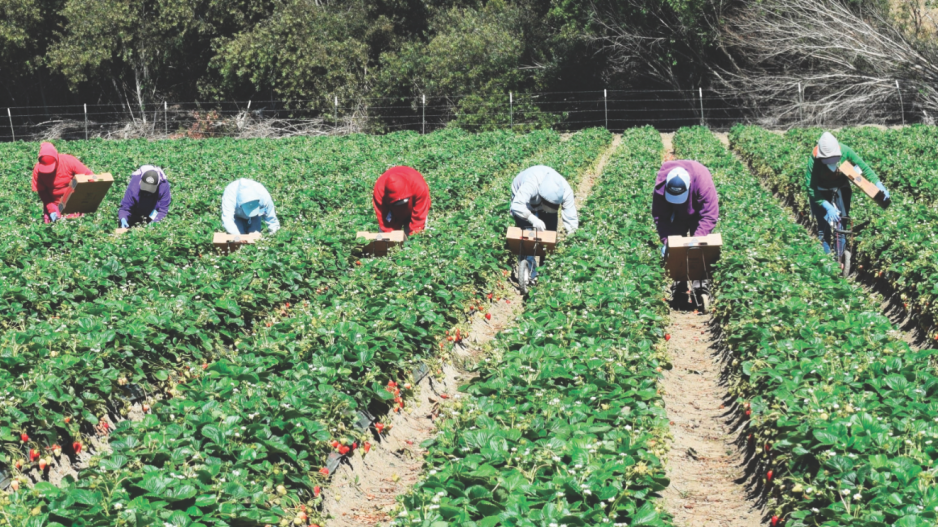Migrant farm workers are just as vulnerable to exploitation as temporary foreign workers, and putting workers on a path to permanent residency would improve their health and safety, says the author of a study on farm working conditions in British Columbia.
“[Authorities] have an implicit right to deport the workers if the job is over – they can send them back and that’s that,” said Gerardo Otero, a professor of sociology at Simon Fraser University. “They also know that at the end of the season, whether they come back next year depends in large part on the employer’s review. That creates the conditions for an extremely docile labour force.”
A similar dynamic was in place with Canada’s temporary foreign worker program (TFWP), which critics said could lead to wage suppression and worker exploitation.
Otero and Kerry Preibisch, an associate professor of sociology at the University of Guelph, surveyed 200 farm workers between 2007 and 2009. They found that 79% of immigrant farm workers and 69% of seasonal agriculture workers said they kept working while sick or injured; 44% of immigrant farm workers and 48% of migrant workers said they kept working because they were afraid to tell their boss they were ill.
Read: Growing B.C. food exports could surpass forestry
A common perception among Mexican migrants is that their employer will send them home if they balk at working long hours or refuse to do work they think is unsafe, according to the study. The authors recommended that migrant workers – 80% of whom said they would like to immigrate to Canada – be granted permanent residency as soon as they arrive in the country.
B.C. farmers say they rely on the program to fill seasonal jobs they just can’t find Canadian workers for. The program does not provide farmers with cheaper labour, said Reg Ens, executive director of the BC Agriculture Council, explaining that farmers pay minimum wage plus transportation to and from Mexico and living quarters on the farm, although workers also pay for a portion of that accommodation.
“There’s going to be a need for low-skilled employees for the foreseeable future,” Ens said. “The risk of putting them on an immigration pathway is they’re going to move on. And that’s totally fine, but then we’re going to need access to other low-skilled employees.”
The seasonal agriculture worker program has been in place since the 1960s in Eastern Canada and was extended to B.C. in 2004. Today, half of B.C.’s farm workforce is seasonal, with 3,000 Mexican workers arriving in B.C. each year to participate in the program.
Agricultural products are among B.C.’s fastest-growing exports, and with the signing of several new trade agreements, exports are expected to increase. The B.C. government aims to grow the agri-food industry from $12 billion to $15 billion a year by 2020.
The increase in the use of seasonal agriculture workers in B.C. happened around the same time Canada’s TFWP was expanded to include low-skilled workers and to extend the length of time workers could stay in Canada.
Canada’s immigration system prioritizes candidates with skills and higher education, so while permanent immigration was an option for skilled temporary foreign workers, it was mostly out of reach for low-skilled workers. Otero argues that farm workers’ manual labour skills should be valued in the immigration system.
In response to several instances of abuse of the TFWP, Canada’s immigration minister at the time, Jason Kenney, made sweeping changes in 2014 that effectively halted much of the program. No changes were made to the seasonal agriculture worker program.
Ens said farmers take safety seriously and the industry works with both the Canadian and Mexican governments on housing standards and working conditions.
WorkSafeBC is encouraged by the progress B.C.’s agricultural industry has made on worker safety, said spokesman Scott McCloy, but there is still room for improvement. In 2014, WorkSafeBC conducted 1,506 inspections of farms, resulting in 1,144 orders to comply with safety regulations. McCloy said that was “a fair number of orders.”
“What we’d like to see is no workers suffer a [serious] injury or fatality,” McCloy said.
@jenstden




